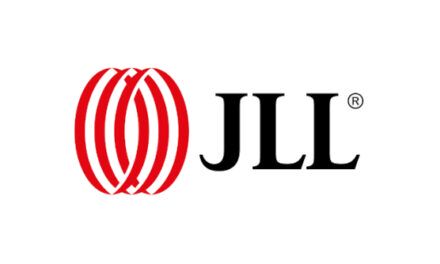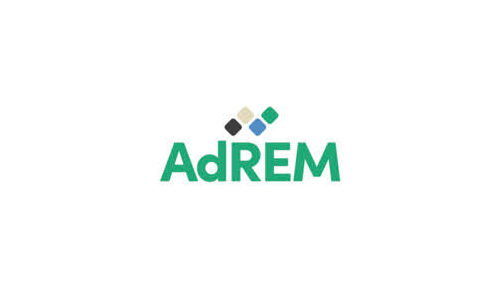
According to Statista, “digital transformation refers to the adoption of digital technology to transform business processes and services from non-digital to digital. This encompasses moving data to the cloud, using technological devices and tools for communication and collaboration, as well as automating processes.”
Digital disruption (from analogue to digitisation and consequently use of digital technologies known as digitalisation) started over 10 years ago; it has already become our new normal. Again, from Statista, the total amount of data created, captured, copied, and consumed globally is forecast to increase rapidly. Having reaching 64 zettabytes (zettabyte = 10²¹ bytes) in 2020, over the five years up to 2025, global data creation is projected to grow by more than another 180 zettabytes. By 2026, global digital transformation spending is forecast to reach $3.4 trillion.
Digital data traffic (content) is significantly growing year on year. This can be seen from the recent flurry of AI chatbot launches, streaming video and social networking to name a few, advancing interconnectivity between data hubs is a rapidly growing need. And this is proving critical to fostering the successful growth of the industry at large.
However, all that digitisation of content and the computational processes associated with it, consequently leading to virtual world, it could not take place without physical devices in which computing information is processed and stored. This is the framework which is staple to all applications and content running around.
But where are these endless rows of neatly stacked physical devices located? They are dispersed all over the world, secured in dedicated shelters, intended for this purpose, supplied with huge power, with a high degree of failure-free operations.
Such data centres (or data exchange hubs) together with the data-transit highways that interconnect them into one global net, constitute one of the tech pillars of current digital-driven world.
Data growth driven by consumer demand
The growth of data-centre services is linked to the increasing demand for higher bandwidth associated with technologies’ advances, such as the Internet of Things (IoT), machine learning etc. This has triggered the need for linking data centres in a reliable and cost-effective way. The European data centre market is set to grow by 6.7% from 2018-2028, and a projected 2.9% (2021-2027) CAGR predicted for the FLAP market (the acronym for the leading areas – Frankfurt, London, Amsterdam, and Paris). This trend shows no sign of slowing down.
Traditional markets, particularly FLAP, concentrate the largest number of data hubs in Western Europe. There is still a large amount of growth (these cities dominate in terms of population and GDP) but this is also, obviously, where there is the greatest amount of legacy investment to capitalise, and hence competition.
However, it’s important to note that other European markets are also growing significantly, with Dublin and recently Warsaw being an example, with plenty of edge nodes to improve end-user experience as well as new interconnection points coming online – between continents.
Top trends in 2023 and beyond
In 2023 alone, one of the top trends that Exa has identified is enterprises looking into more distributed types of workloads. Gone are the days when all enterprise applications were only positioned in the cloud. We understand that Exa needs to be able to serve increasing distributed workloads, core colocation sites and edge sites, with a reliable and low-latency network infrastructure. We craft our services to play a key role in the digital revolution.
Exa works hard to make sure that growth at the edge comes with the resilience the industry needs – something it does through its drive for constant route diversification. Exa is uniquely positioned to capture emerging connectivity demand waves due to its network presence in both the mature, growing and early-stage markets. This is a key strategic strength in the data centre interconnectivity market.
Exa enters market with DC interconnectivity as top priority
Exa is proud to be the industry challenger, a flexible and solid organisation willing to meet its customers’ bespoke connectivity requirements.
Exa Infrastructure knows the value of data centre interconnectivity, in fact its entire business is anchored to this in response to the increase of data traffic across Europe and beyond. Exa’s services are driving scalable and sustainable growth across global markets.
Exa focuses on data centre-to-data centre interconnectivity, enabling core-to-edge data distribution and core-to-core connectivity across all major European data centre markets. Not only has Exa established a critical position in the key FLAP markets, but it is also relied upon by data centres players across Europe’s emerging Tier II & Tier III markets, including the Iberian Peninsula, the Nordics, Central, Southern and Eastern Europe.
One of Exa’s key market differentiators is the sheer size of its established and growing network, which includes over 500 points-of-presence (PoPs) globally and three owned-and-operated transatlantic cables, including the fastest and lowest latency link between London and New York.
On launching, Exa created a dedicated data centre interconnectivity programme – which is still going strong today – enabling Exa to take a more proactive approach to capital deployment, building into key strategic data centres ahead of customer orders, rather a game of ‘pin the cost on an anchor customer’. Exa’s strategic investment plans are defined by each data centre individually, with focus on size (in terms of MW and floor space), power density, PUE, age of the facility, future scalability, and many other factors, which are all part of its due diligence process. Then, once a candidate site has made it to the shortlist, Exa will push forward to bring the site online. In addition, Exa proactively surveys its customers to understand where their needs are and to ensure that the connected data centre sites will benefit its customers’ digital needs of today and tomorrow.
Exa sees itself as a challenger to its competitors. Being agile and relying on a team that prides itself on being easy to do business with, it continues to expand and be amongst the first movers in the most requested locations. Operating in such a strategic way not only enables Exa to grow with its customers, but also to drive industry developments


























